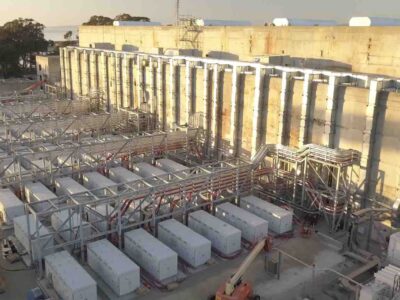As we make our way through the 2020s, things need to improve for the sake of emerging markets. Emerging markets are “generally identified based on such attributes as sustained market access, progress in reaching middle-income levels, and greater global economic relevance,” according to the International Monetary Fund. While these regions definitely are carbon emitters, they are also “projected to be the most impacted with Africa, Asia-Pacific, the Middle East and Latin America expected to suffer larger losses in real GDP terms compared to Western Europe and North America,” says RBC Global Asset Management.
This is not just a story of risk though, but also one of potential reward. Emerging markets want to get in on the energy transition, with demand for electricity increasing in countries that are not members of the Organization for Economic Co-operation and Development (OECD). But according to BloombergNEF’s New Energy Outlook 2020, emerging markets require $9 trillion if they are to get two-thirds of their energy from renewable sources by 2050. They won’t be able to make this progress alone, nor should they have to; as Nadia Ameli from the UCL Institute for Sustainable Resources shared, “we don’t believe it is fair that regions where people are already losing their lives and livelihoods because of the severe impacts of climate change also have to pay a high cost of finance to switch to renewables. Radical changes in finance frameworks are needed to better allocate capital to the regions that most need it.” Luckily, a partnership of the private sector, governments, and philanthropic foundations has come together to help out and generate risk-adjusted returns at the same time.
The Climate Finance Partnership (CFP), created by the One Planet Summit Philanthropists Task Force and announced at the 2018 One Planet Summit, is a “flagship blended finance investment vehicle” to funnel institutional capital investments into the climate infrastructure of emerging markets, particularly in Asia Pacific, Latin America, and Africa. Rémy Rious, CEO of the French Development Agency, adds that there will be “a priority to Africa as a key continent to France and Europe and one of the most vulnerable regions to climate change despite contributing the least to global warming.” With the financial support to accelerate the development of areas like renewable power, energy efficiency, energy storage, and low-emission or electrified transportation, the hope is that the countries receiving investment can limit carbon emissions and mitigate harmful climate effects. Led by French President Emmanuel Macron, all parties to the CFP – including BlackRock, the French, German, and Japanese governments, the Grantham Environmental Trust, the Hewlett Foundation, and the Quadrivium Foundation – believe that “aggressive action is necessary in order to limit the global temperature increase to 1.5°C, in a manner that harnesses the economic opportunities embedded in the transition to a global low-carbon economy.” And aggressive action is being taken. BlackRock announced on July 8 that it had secured more than $250 million in commitments for the CFP.
The CFP is BlackRock’s first vehicle to deal with climate issues in emerging markets, despite the asset manager’s focus on the global transition to net zero. The original plan agreed on by the partners in 2020 estimated a “first-loss tranche of at least $100 million in catalytic capital, anchored by government and foundation partners”; however, the French Development Agency, Germany’s KfW Development Bank, and the Japan Bank for International Cooperation, along with the foundation members, have together surpassed that by committing $112.5 million. BlackRock has already begun the next phase to use that catalytic capital to “mobilize a goal of at least $400 million in institutional capital commitments.” BlackRock gathered commitments from the vehicle’s first institutional investors: Standard Chartered Bank and MUFG Bank, as well as a European pension called Dai-ichi Life Insurance. As the Global Head of BlackRock Alternative Investors, Edwin Conway, stated in the press release, “We are honored to collaborate with this group of like-minded organizations from the public and private sectors to raise initial capital that will be used to help unlock the energy transition in emerging markets.” At first close, CFP has raised half of its $500 million target, and more funding is surely on the way.





